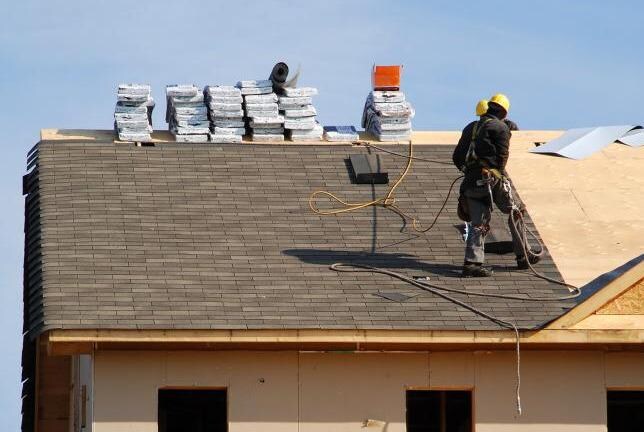As a homeowner in Fontana, California, your roof is a critical part of your property’s protection and value. It shields you and your family from the elements and plays a significant role in your home’s curb appeal. However, roofing can be a complex and often misunderstood subject. In this blog, we’ll address some frequently asked questions (FAQs) about roofing in Fontana to help you better understand this essential aspect of homeownership.
1. How Often Should I Inspect My Roof?
Regular roof inspections are crucial for the early detection of issues. You should inspect your roof at least twice a year, ideally in the spring and fall. Additionally, after severe weather events like heavy storms or high winds, it’s a good idea to conduct a thorough inspection to check for any damage.
2. What Are the Signs of a Damaged Roof?
Several signs indicate roof damage, including:
- Missing or damaged shingles or tiles.
- Leaks or water stains on your ceiling
- Sagging or drooping areas on your roof
- Granules from shingles in your gutters
- Increased energy bills (indicating poor insulation).
If you notice any of these signs, it’s essential to schedule a professional inspection promptly.
3. Can I Repair My Roof Myself?
While some minor repairs may be manageable for a skilled DIY enthusiast, roof work can be dangerous and complex. It’s highly recommended to leave roof repairs and maintenance to trained professionals. Professionals have the experience, tools, and safety equipment to perform the job correctly and safely.
4. How Long Does a Typical Roof Last?
The lifespan of a roof depends on several factors, including the material used and the quality of the installation. Here are some general guidelines:
- Asphalt shingles: 20–30 years
- Wood shingles or shakes: 30–40 years
- Metal roofing: 40–70 years
- Tile roofing: 50–100+ years
- Slate roofing: 100+ years
Keep in mind that proper maintenance and regular inspections can extend the lifespan of your roof.
5. What Is Roof Ventilation, and Why Is It Important?
Roof ventilation refers to the system of vents that allow air to circulate in and out of your attic. Proper ventilation is essential because it:
- Helps regulate temperature, preventing excessive heat buildup.
- Reduces moisture and humidity in the attic, which can lead to mold and rot.
- Increases the lifespan of roofing materials by preventing premature deterioration.
- Improves energy efficiency by reducing the workload on your HVAC system.
6. How Can I Prevent Roof Leaks?
Preventing roof leaks starts with regular maintenance and inspections. Additionally, you can take these steps:
- Keep gutters and downspouts clean to ensure proper water drainage.
- Trim overhanging tree branches that can damage your roof during storms.
- Seal any gaps or cracks around roof penetrations like vents and chimneys.
- Ensure proper attic insulation and ventilation to prevent ice dams in the colder months.
7. Do I Need to Replace My Entire Roof if I Have a Leak?
Not necessarily. The extent of the damage and the age of your roof will determine whether you need a repair or a replacement. In some cases, a skilled roofing professional can repair the damaged area without the need for a full replacement. However, if your roof is nearing the end of its lifespan or has extensive damage, a replacement may be the best long-term solution.
8. How Can I Choose the Right Roofing Material for My Home?
Selecting the right roofing material depends on your budget, climate, and aesthetic preferences. Here are some common roofing materials and their characteristics:
- Asphalt shingles are affordable, versatile, and suitable for most climates.
- Metal roofing is durable, energy-efficient, and long-lasting.
- Tile roofing is elegant, long-lasting, and ideal for Mediterranean-style homes.
- Wood shingles or shakes are rustic, natural, and eco-friendly.
Consulting with a roofing professional can help you make an informed choice based on your specific needs.
9. How Can I Prepare My Roof for the Winter Season in Fontana?
Fontana experiences relatively mild winters, but it’s still essential to prepare your roof for potential weather-related challenges. Here are some steps:
- Clean your gutters to ensure proper water flow.
- Trim any overhanging tree branches that could fall onto your roof.
- Inspect your roof for any existing damage and address it promptly.
- Check and repair any roof flashing to prevent leaks.
10. What Should I Look for in a Roofing Contractor in Fontana?
When choosing a roofing contractor, consider these factors:
- Licensing and insurance: Ensure the contractor is licensed, bonded, and insured.
- Experience and reputation: Check for reviews, referrals, and a proven track record.
- Written estimates: Get detailed, written estimates with all costs and project details.
- Communication: Choose a contractor who communicates clearly and promptly.
By addressing these FAQs, we hope to provide Fontana homeowners with a better understanding of roofing and the importance of proper maintenance and professional assistance. Your roof plays a vital role in protecting your home and family, so regular inspections, timely repairs, and knowledgeable roofing professionals are essential to maintaining its integrity and longevity.
Fontana Roofing https://www.fontana-roofing.com

